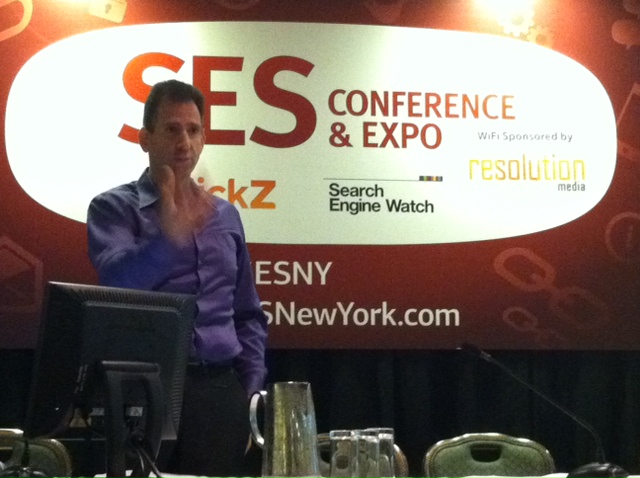“Most websites don’t have a traffic problem, they have a conversion problem,” said SES advisory board member Bryan Eisenberg. At SES New York 2012, he spoke about why the majority of landing pages have a “conversion problem” and the need for businesses to create more persuasive and intuitive landing pages to succeed in converting website visitors.
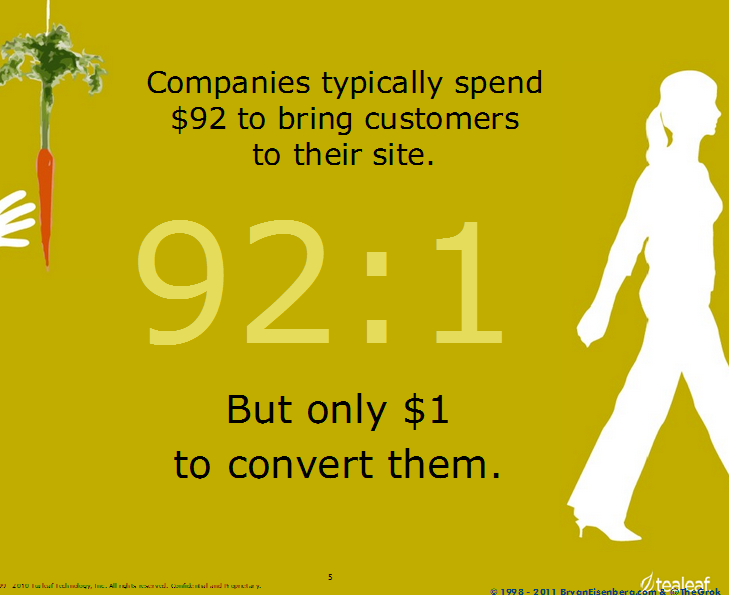 Eisenberg said there’s a gap between the spend and the return on website marketing. He said more than $56 billion dollars will be spent on driving traffic to websites, but the conversion rates are still at 2 percent on average. There is a 92:1 ratio in what marketers spend on bringing customers to their site versus what they spend in trying to convert them.
Eisenberg said there’s a gap between the spend and the return on website marketing. He said more than $56 billion dollars will be spent on driving traffic to websites, but the conversion rates are still at 2 percent on average. There is a 92:1 ratio in what marketers spend on bringing customers to their site versus what they spend in trying to convert them.
The four main factors correlating with landing page success, according to Eisenberg, are:
- Perceived control over conversion rates
- Conversion optimization strategies
- Holding someone (or a team of people) in the company accountable for conversions
- Incentivizing staff based on conversion rates
Companies that see conversion rate improvements generally use 26 percent more conversion strategies than those businesses who don’t see improved conversions. He also said that 50 percent of those with improved conversions are segmenting audiences more carefully with landing pages.
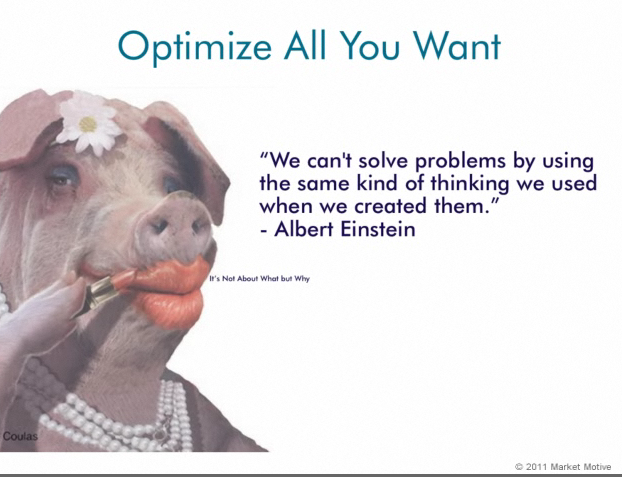 The main problem, he suggests, is that most marketers don’t know what to test for when they are trying to optimize their pages. For instance, he points to marketers who spend time testing for the right colors on their call to action buttons. “Changing the color of your call to action to try to improve your landing page is like putting lipstick on a pig,” he said.
The main problem, he suggests, is that most marketers don’t know what to test for when they are trying to optimize their pages. For instance, he points to marketers who spend time testing for the right colors on their call to action buttons. “Changing the color of your call to action to try to improve your landing page is like putting lipstick on a pig,” he said.
This isn’t to say that graphics and visuals aren’t important: he cites an example of one page where changing one call to action graphic gave a 5 percent lift in clicks overnight. The key, he said, it to test for impact – not variation. He suggested a relevant graphic might better showcase products or services (while a color is a more “irrelevant variation”).
Ultimately, he believes marketers need to focus in on the conversion trinity of landing page optimization. Here it is:
The conversion Trinity of landing page optimization
1. Relevance: Are you relevant to visitors’ queries?
2. Value: Do visitors immediately know why you are the right solution for them?
3. Calls to action: It is obvious what visitors need to do next?
Relevance
Google calls relevance “Quality Score,” Eisenberg said. If you check out Google’s landing page guidelines, you’ll find this is a key tenet. But there is user value to it that can not only improve visibility, but also a brand’s bottom line.
He encouraged marketers to think of customers as bloodhounds – if you let them get the scent of something else, they will be distracted. It’s essential to keep pages focused and highly relevant to the query that brought visitors to the page.
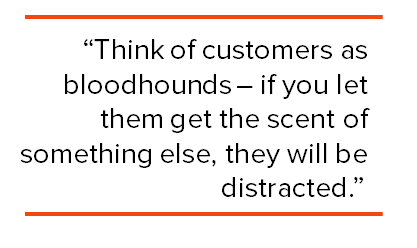
He suggeted some of the “scents” to keep consistent include:
Trigger words
Offers
Graphics
Overall, relevance encompasses the idea that website content must match the promise of a link.This closely relates to messaging, and being consistent with that a brand tells users.
Value
Value can be tricky. It will take on different meanings to to different visitors, said Eisenberg. He suggested marketers think about visitors as either new or returning, and prospective buyers as spontaneous, methodical, humanistic or competitive. Ultimately, marketers need to know how to segment their audiences. By considering different audience personas, brands can identify the value propositions that will appeal to individual users.
Calls to action
Then, of course, marketers need to make sure people know what to do when they arrive at a landing page. Going back to the idea of building personas to offer value, Eisenberg suggests that these personas can be used to determine where to place the right calls to action. Similarly, calls to action have to maintain the “scent” that brought the bloodhounds to the page – relevant CTAs with quality text, related graphics and prime location placement will inspire clicks more than generic ones scattered on a page.
He suggests that navigability should be a top priority in developing calls to action.
The conversion Trinity at work: More Landing Page conversions
Eisenberg offered attendees some examples of the power of the conversion of landing pages. In one case, he showed how the New York Public library increased email newsletter sign-ups by 52% in a short period of time using the conversion trinity.
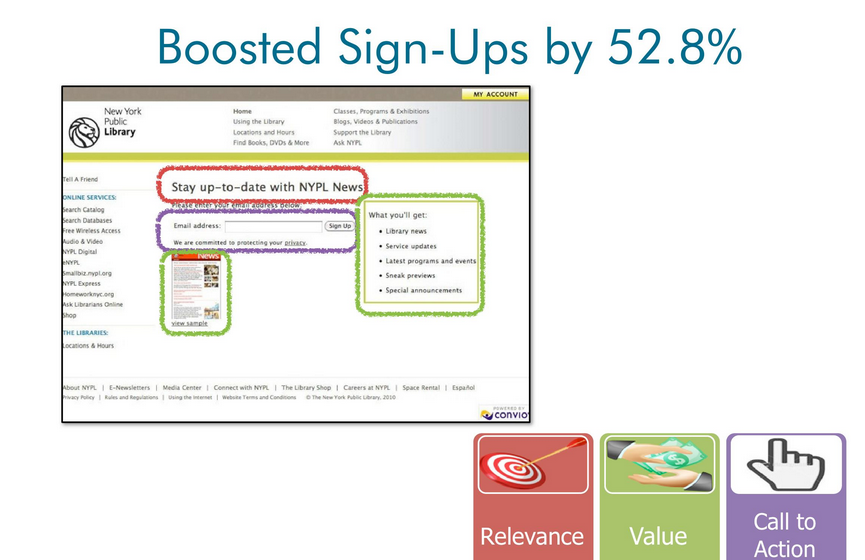 Conversion optimization was a major theme at SES New York. As Brafton reported, Google’s Avinash Kaushik also offered insights on how to use Google Analytics to optimize for the biggest economic value opportunities in web marketing campaigns.
Conversion optimization was a major theme at SES New York. As Brafton reported, Google’s Avinash Kaushik also offered insights on how to use Google Analytics to optimize for the biggest economic value opportunities in web marketing campaigns.
